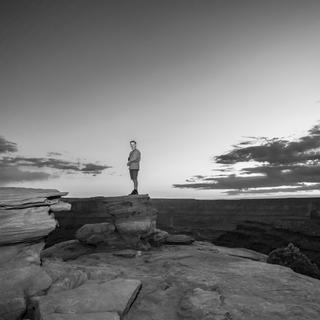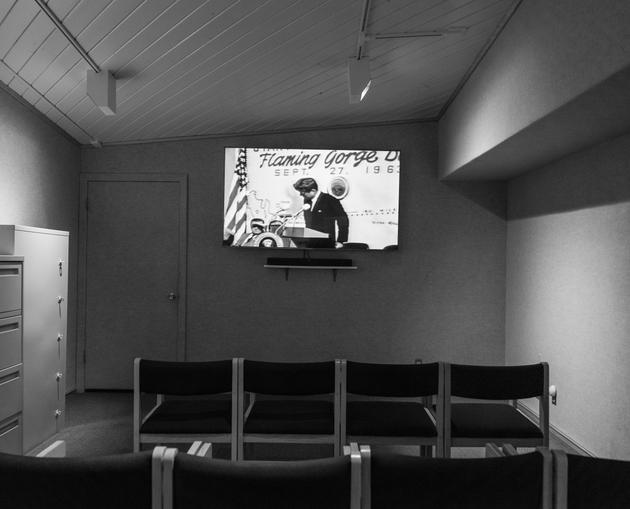


In photos: The waters of the Colorado River, a political issue
GalleryFrom the western United States to northwestern Mexico, American photographer John Trotter has been documenting the consequences of the river's dramatic decline for the past 20 years.
When John F. Kennedy inaugurated the Flaming Gorge Dam in northern Utah with great fanfare in 1963, he used it as a political tool. Seeing the 150-meter-high walls reshaping the landscape, it's easy to imagine the pride of the Democratic president. Yet, dizzying as it is, this monumental hydraulic infrastructure offers only fragile promise. As early as 1922, when its annual flow was divided between seven American states and Mexico, the quantity of water supplied by the structure was overestimated by 25%.

"They built an extensive network of dams, stilling much of the once roiling river and creating the foundation on which the Southwestern United States has been built," explained American photographer John Trotter, who has been documenting the consequences of the Colorado River's profound alteration for the past 20 years. This long investigation has taken him from the western United States to northwestern Mexico, where he focused on the over-consumption of water in California, the changes in biodiversity along the river and the agriculture that depends on it.
More recently, he has been focusing on how the Colorado River's beneficiaries are coming to terms with the dramatic decline in its water level. "There could be open conflict between the states over water at some point because no one would exist without it," he said. The river has gone from being a blessing to a political nightmare.
A striking contrast
The Colorado River supplies more than 40 million Americans with water and electricity, and supports the agricultural production that feeds the rest of the country. Scientists estimate that its flow has declined by around 20% compared to the 20th century. Worst-case scenarios even project a further decline of 20% by 2050. Across the seven states that depend on its supply, this new situation is weighing on the electoral campaign for the November 5 presidential election. "California doesn't supply water but is the state that consumes the most. This has created strong resentment in Wyoming," noted Trotter.
The contrast is striking. On one side, Arizona, Nevada and California. On the other, Colorado, New Mexico, Utah and Wyoming. Downstream, a population disconnected from water, cruising lakes in motorboats and watering its golf courses and public gardens without considering the cost. Upstream, a rural life made up of snow, hunters and fishers, with water generously stored in the snow-covered Rocky Mountains. Here and there, graffiti denounces Joe Biden's environmental policies.
You have 37.18% of this article left to read. The rest is for subscribers only.
